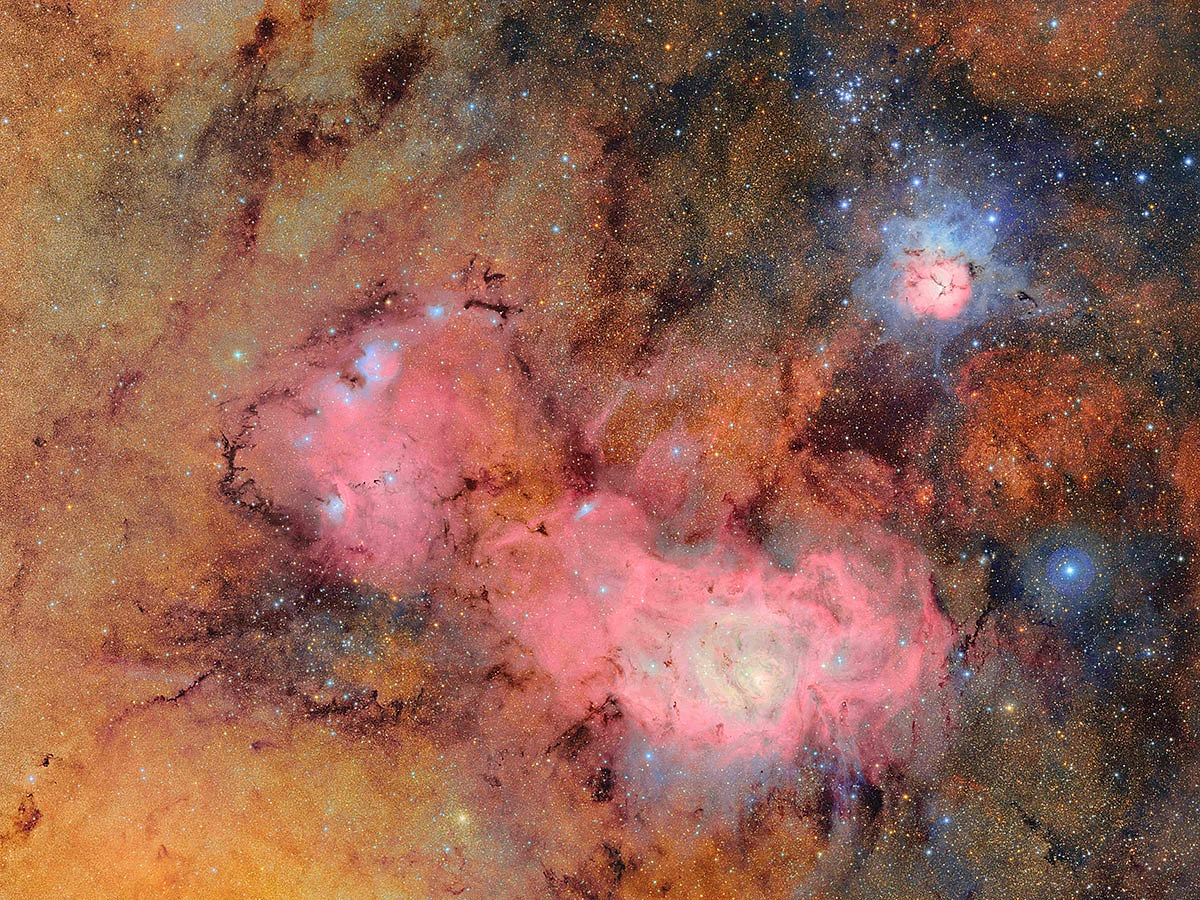What the Vera Rubin Telescope just revealed about stunning galaxies and asteroids
A new cosmic era begins as observatory maps millions of galaxies and hidden space rocks.

Dubai: A powerful new observatory has opened its eyes to the universe, revealing its first awe-inspiring images that promise to reshape our cosmic understanding.
Perched atop Cerro Pachón in Chile, the Vera C. Rubin Observatory — home to the largest digital camera ever built — has begun capturing the southern sky with breathtaking clarity.
In images released on Monday, vast nebulae and galaxy clusters shine in unprecedented detail. A composite of 678 exposures, taken over just seven hours, shows the Trifid and Lagoon Nebulae, star-forming regions located thousands of light-years away, glowing in vivid pinks and reds.
“The image reveals these stellar nurseries within our Milky Way in unprecedented detail,” AFP reported, noting that previously faint or invisible features are now clearly visible.
Another sweeping image features the Virgo Cluster, a dense grouping of galaxies millions of light-years away. A zoom-out video, nicknamed the “cosmic treasure chest,” starts with two galaxies and reveals approximately 10 million more — just 0.05% of the estimated 20 billion galaxies the telescope will observe over the next decade, according to CNN.
“The Rubin Observatory is an investment in our future,” Michael Kratsios, director of the White House Office of Science and Technology Policy, told AFP. “It will lay down a cornerstone of knowledge today on which our children will proudly build tomorrow.”
A telescope like no other
The US-funded facility, more than 20 years in the making, is a collaboration between the National Science Foundation (NSF) and the Department of Energy. It features an 8.4-meter Simonyi Survey Telescope, a revolutionary mirror system, and a 3,200-megapixel camera — the largest digital camera ever built.
Its mission is the Legacy Survey of Space and Time (LSST) — a 10-year, ultra-wide, high-definition survey of the night sky. Scanning the sky every few nights, Rubin will create a time-lapse of the cosmos — capturing changes in asteroids, exploding stars, comets, and galaxies in motion. CNN described it as a “movie of the universe.”
“This is a once-in-a-generation moment for astronomy,” said Professor Catherine Heymans, Astronomer Royal for Scotland. “For decades we wanted to build this phenomenal facility,” she told BBC.
Boom in asteroid discovery
In just 10 hours of test observations, the Rubin team discovered 2,104 previously unknown asteroids, including seven near-Earth objects — all of which pose no threat. By comparison, all other observatories combined discover around 20,000 new asteroids per year — a pace Rubin may soon exceed.
Rubin is also expected to excel at spotting interstellar objects, like the mysterious ‘Oumuamua, which passed through the solar system in 2017.
“NSF-DOE Rubin Observatory will capture more information about our universe than all optical telescopes throughout history combined,” Brian Stone, acting director of the NSF, told CNN.
Honouring a pioneer of dark matter
The observatory is named after Vera C. Rubin, the American astronomer whose work provided the first conclusive evidence for dark matter — an invisible substance that exerts gravitational force on galaxies.
Her findings revealed that 95% of the universe is made up of dark matter and dark energy — mysterious forces that remain poorly understood even today. The observatory not only advances her legacy scientifically but also celebrates her as a trailblazer for women in science.
Who was Vera C. Rubin?
Vera Cooper Rubin (1928–2016) was a pioneering American astronomer who reshaped our understanding of the cosmos. In the 1970s, she studied how stars orbit within galaxies and discovered that stars at the edges moved just as fast as those near the center — a result that defied Newtonian expectations.
Her research provided key evidence that galaxies are surrounded by vast halos of unseen mass — what we now call dark matter.
Working in a male-dominated field, Rubin broke significant barriers for women in science and inspired generations of astronomers. The observatory named in her honor recognizes not only her brilliance, but her courage and legacy.
What does this mean?
The unveiling of the Vera Rubin Observatory’s first images marks a historic leap forward in astronomy. More than just a technological achievement, it’s a transformational moment in how humanity studies the universe.
Why it matters:
Unprecedented discovery power: Rubin found 2,100+ asteroids in just 10 hours. Over time, it will likely discover millions, including potential threats to Earth.
A cosmic time machine: By recording the sky night after night, Rubin will reveal exploding stars, shifting galaxies, and possibly even new interstellar visitors.
Unraveling cosmic mysteries: Rubin will play a major role in unlocking the secrets of dark matter and dark energy — which make up 95 per cent of the universe.
Global scientific legacy: Its 10-year data stream will drive discoveries for decades, empowering researchers worldwide.
Sign up for the Daily Briefing
Get the latest news and updates straight to your inbox
Network Links
GN StoreDownload our app
© Al Nisr Publishing LLC 2025. All rights reserved.
